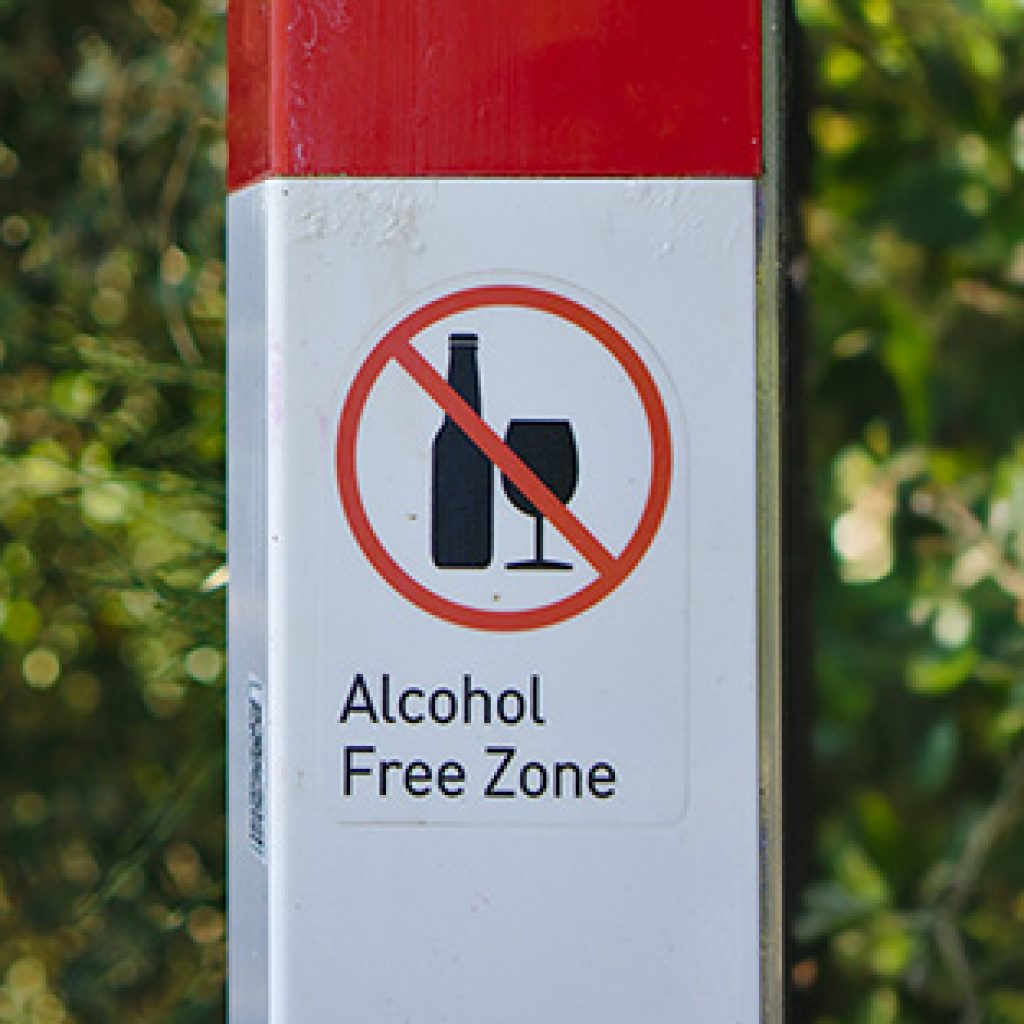The Importance of Nutrition in Recovery: What the Research Shows
The Importance of Nutrition in Recovery: What the Research Shows
With the substance use epidemic in the U.S. continuing to reach crisis levels, it is more important than ever that treatment and recovery workers partner with those from every field impacted by substance use disorders (SUDs). By joining to combine new and innovative treatment modalities from many fields, service providers stand the best chance of successfully treating SUDs. While the idea of using nutritional concepts in treatment and recovery was conceived in 1955, it currently is not widely used. The American Dietetic Association, now known as the Academy of Nutrition and Dietetics, published a position paper in 1990 stating that nutrition is an “essential component of treatment and recovery from SUD” and the position statement has never been implemented (Wiss, 2018, p. 21; Chavez & Rigg, 2020). To date, little progress has been made in using nutrition professionals in treatment settings. There are currently no training programs for nutrition professionals who wish to pursue working in treatment and recovery settings, and there are no standards of practice to guide the “healthful eating” programs that some addiction treatment facilities have established during the last decade.
The Problem
People with a SUD or Alcohol Use Disorder (AUD) are often malnourished due to unhealthy or inadequate diets and have physical problems as a result of substance use and malnutrition prior to entering treatment (Grant et al., 2004; Whatnall et al., 2021). According to Wiss, studies have shown that up to 65% of intravenous drug users met criteria for hunger that is positively correlated with depression, while homeless heroin and cocaine addicts prefer sweets and refined foods such as cereal over fruits and vegetables (2018, p. 21). Studies have also found that those people with the most serious SUDs are the most malnourished. Vitamin and mineral deficiencies are rampant and do not return to normal levels quickly during recovery. To add to the complexity of the issue, those in recovery frequently describe gaining weight through the use of binging or use of food to regulate their moods during the first six months. Research shows that women especially are concerned with weight gain as a trigger for relapse. One study revealed that about 70% of women in recovery had concerns about weight (Wiss, 2018, p. 21). AUD in particular has been linked to obesity, alcoholic liver disease, dysbiosis (imbalance of microorganisms on or within our bodies), immune dysfunction, hormonal imbalances, and disordered eating.
In addition to general nutritional consequences of SUD, there are nutritional responses common to specific drug types. Some examples are:
- Stimulants: Patients with cocaine use disorder (CUD) have a high preference for beverages sweetened with sucrose and have a higher consumption of carbohydrates and fatty foods (Ersche et al., 2013); cocaine use can also interfere with metabolism and is associated with high blood pressure (Akkina SK, et al. 2012.)
- Methamphetamine (MA): Reductions in appetite hormone NP-Y have led to the use of MA for weight loss and it has been linked to bulimia nervosa and rebound weight gain; IV MA has also been linked to dental problems that are hypothesized to be caused by MS itself, poor dental hygiene, or high consumption of sweetened foods and beverages, although the cause has not been identified (Hamamoto & Rhodus, 2009).
- Opioids: In studies of people with OUD who are in methadone maintenance, opioids have been associated with hormonal abnormalities, weight gain, reduced bone mass, and bowel dysfunction, including bacterial overgrowth due to reduced motility other studies have linked OUD to numerous vitamin and mineral deficiencies and elevated cholesterol levels (Divsalar K, et al. 2014).
A paper on the use of nutritional therapy in opioid addiction treatment cited the following effects of substance use disorder:
“Physical effects of opioid addiction include
- Organ damage: brain, kidney, heart, liver
- Hormone imbalance
- Cancer
- Gastrointestinal Diseases
- Decreased pain tolerance
- Death
Neurological and emotional effects include
- Depression
- Anxiety
- Memory loss
- Aggression
- Mood swings
- Paranoia
- Neuropathy and dementia” (Cunningham, 2016).
The author called for expansion of interventions through the use of nutritional interventions to move beyond treating through detoxification and abstinence only. Embracing a more holistic approach that incorporates assessment of deficiencies, creation of individual nutritional plans to correct the deficiencies, and implementation of follow-up maintenance plans would help persons with SUDs to function better socially and regain bodily and mental health (Cunningham, 2016).
Another part of the problem is that many people follow the typical American diet, that consists largely of highly refined, processed foods that are high in sugars, unhealthy fats such as omega 6’s (vegetable and corn oils), low in omega 3’s (avocados, fish, nuts, seeds, and green leafy vegetables), and low in fiber (Reid, B. K. (n.d.). The consequences of the typical American diet can be severe for people with SUDs who are already suffering from the physical and mental effects of the drugs they consume. For instance, high levels of omega 6’s increase inflammation in the body while low levels of omega 3’s decrease inflammation. Omega 3’s are essential for cell development and for the development, structure, and functioning of the brain. Deficiencies of omega 3’s have effects that can be devastating, such as contributing to schizophrenia, Attention Deficit Hyperactivity Disorder (ADHD), dyslexia, depression, bipolar disorder, self-harm and impulsivity, and suicidal behavior in depressed patients (Reid, B. K. (n.d.). These effects can potentially derail treatment and recovery when not addressed.
People with SUDs often develop unhealthy eating patterns and food preferences during periods of active substance abuse. These patterns are not easily changed. Living situations and community environments may also limit access to nutritious foods, particularly areas of some cities that offer no access to fresh fruits and vegetables and unprocessed foods, known as “food deserts” (Chavez & Rigg, 2020). People new to treatment and recovery often do not have the knowledge or experience to self-assess nutritional needs and plan healthy eating without professional guidance. Those in treatment and recovery can be overwhelmed by the task if they have little or no support or guidance and it may be unrealistic to expect them to do so (Chavez & Rigg, 2020). Another common issue is that those with OUD learn to pay less attention to hunger and thirst sensations. As people enter treatment and sobriety, the restoration of these sensations can be mistaken for cravings that are common in OUD when they are actually genuine hunger (Morley, Levine, Yim, & Loy, 1983, as cited in Chavez & Rigg, 2020).
What Treatment and Recovery Providers Can Do
The first step is for treatment providers to recognize and learn about the role of nutrition in treatment and recovery. When diet and nutrition education are improved during treatment and into recovery, many patients avoid relapse (Grant et al, 2004: Whatnall et al., 2021). Individuals who enter treatment for opioids, for instance, often enter a period of detoxification. Because opioids are water-soluble, they clear the body more quickly than fat-soluble drugs, resulting in pain and discomfort for the patient. This process can include abdominal cramping, nausea and vomiting, diarrhea, muscle cramps, fever, and sweating. The accompanying loss of bodily fluids can result in the loss of nutrients, minerals, and electrolyte imbalance, which in turn can cause heart irregularities and erratic glucose levels. Alterations in mood, increased anxiety, depression, and distress are common (Chavez & Rigg, 2020). When treatment providers are unaware of the role of adequate nutrition and hydration in detoxification, they may not consider eating and hydration until the patient’s symptoms have ceased, as documented in numerous studies (Atlas, Dolz, Obrador, & Forteza-Rei, 1998; Varela, Marcos, Santacruz, Ripoll, & Requejo, 1997, as cited in Chavez & Rigg, 2020).
The second step is to provide nutrition screenings and assessments to obtain a clear picture of the client’s overall health and to identify malnutrition and co-occurring nutritional issues (Chavez & Rigg, 2020). Such assessments generally include five domains: (a)food/nutrition-related history, (b)anthropometric measurements, (c) biochemical data, (d) nutrition-focused physical findings, and (e) the client’s history (Academy of Nutrition & Dietetics, 2019).
The Nutrition Care Process from the Academy of Nutrition and Dietetics is a framework that uses the Nutrition Care Process Model (NCPM), a workflow for professionals in a variety of settings. The models and process ensure that all clients get high quality care according to their individual needs and values. It was established as a critical thinking and decision-making tool for nutrition and dietetic professionals to use in all care settings and consists of four steps:
- Nutrition Assessment and Reassessment
- Nutrition Diagnosis
- Nutrition Intervention
- Nutrition Monitoring/Evaluation
A nutritional assessment is useful for identifying other nutritional issues, such as metabolic syndrome, chronic diseases, weight management, eating disorders, and food addiction (Chavez & Rigg, 2020).
The third step is to educate and encourage clients to incorporate health eating and diet habits into their new sober lifestyle. Recommending and supporting efforts to eat healthy, well-rounded meals and snack, limit caffeine, drink sufficient water, and supplement with a multivitamin can help clients to support the repair of organs that may have been damaged during active substance use, boost immune function, and improve energy levels and moods (Chavez & Rigg, 2020).
The fourth step might include recommendations or referral for clients to learn nutrition life skills for reading labels while shopping, learning to cook healthy meals, and other topics such as: “cooking on a budget, mindful eating, food safety, ways to increase intake of fruits, vegetables, calcium and whole grains, and decrease fat and sodium intake” (Clark, Bezyak, & Testerman, 2015, as cited in Chavez & Rigg, 2020).
Lastly, residential treatment programs are in a unique position to correct nutritional deficiencies and promote healthy eating habits. Because drug treatment facilities have no nutritional standards or guidelines as do hospitals or other long-term care facilities, the priorities may be to serve inexpensive foods that appeal to patients, but which do not support healthy choices, such as pizza and cheeseburgers (Wiss, 2019). Hiring professional nutrition staff, while not in the budget of many residential programs, would be the most effective way to meet the nutritional needs of residents in recovery. Multidisciplinary teams of professional providers should also include nutrition professionals (Chavez & Rigg, 2020).
Is nutrition included in your organization’s screening and assessment of new treatment clients? What is your approach to meeting this important need? Please share your thoughts in the comments below.
For additional resources please access our Resources & Downloads page or links provided in this post.
References
Akkina SK, et al. 2012. Illicit drug use, hypertension, and chronic kidney disease in the US adult population. Transl Res. 160(6):391e398.
Divsalar K, et al. 2014. Serum biochemical parameters following heroin withdrawal: an exploratory study. Am J Addict. 23(1):48e52.
Ersche KD, et al., 2013. The skinny on cocaine: insights into eating behavior and body weight in cocaine-dependent men. Appetite.
Hamamoto DT, Rhodus NL. 2009. Methamphetamine abuse and dentistry. Oral Dis. 15(1):27e37.
Wiss, D. I. (2018). The Role of Nutrition in Addiction Recovery: What We Know and What We Don’t. In I. Danovitch & L. Mooney (Eds.), The assessment and treatment of addiction: Best practices and new frontiers. Elsevier.
Wiss, D. A. (2019). A biopsychosocial overview of the opioid crisis: Considering nutrition and gastrointestinal health. Frontiers in Public Health, 7, 193-193. https://doi.org/10.3389/fpubh.2019.00193
Chavez, M. N., & Rigg, K. K. (2020). Nutritional implications of opioid use disorder: A guide for drug treatment providers. Psychology of Addictive Behaviors, 34(6), 699-707. https://doi.org/10.1037/adb0000575
Cunningham, P. M. (2016). The use of sobriety nutritional therapy in the treatment of opioid addiction. J Addict Res Ther, 7(282), 10-4172.
Whatnall, M. C., Skinner, J., Pursey, K., Brain, K., Collins, R., Hutchesson, M. J., & Burrows, T. L. (2021). Efficacy of dietary interventions in individuals with substance use disorders for illicit substances or illicit use of pharmaceutical substances: A systematic review. Journal of Human Nutrition and Dietetics.
Reid, B. K. (n.d.). Barbara K. Reid overview presentation. Careers of Substance | Supporting the Massachusetts Substance Use and Addictions Workforce. https://careersofsubstance.org/library-item/barbara-k-reid-overview-presentation
Grant, L. P., Haughton, B., & Sachan, D. S. (2004). Nutrition education is positively associated with substance abuse treatment program outcomes. Journal of the American Dietetic Association, 104(4), 604–610. https://doi.org/10.1016/j.jada.2004.01.008
Blog Post Tags:
Related Blog Posts
Related Learning Labs
Related Resources
.
- Buscar Tratamiento de Calidad para Trastornos de uso de Sustancia (Finding Quality Treatment for Substance Use Disorders Spanish Version)
- Finding Quality Treatment for Substance Use Disorders
- Focus On Prevention: Strategies and Programs to Prevent Substance Use
- Monthly Variation in Substance Use Initiation Among Full-Time College Students
- The National Survey on Drug Use and Health (NSDUH) Report: Monthly Variation in Substance Use Initiation Among Adolescents








